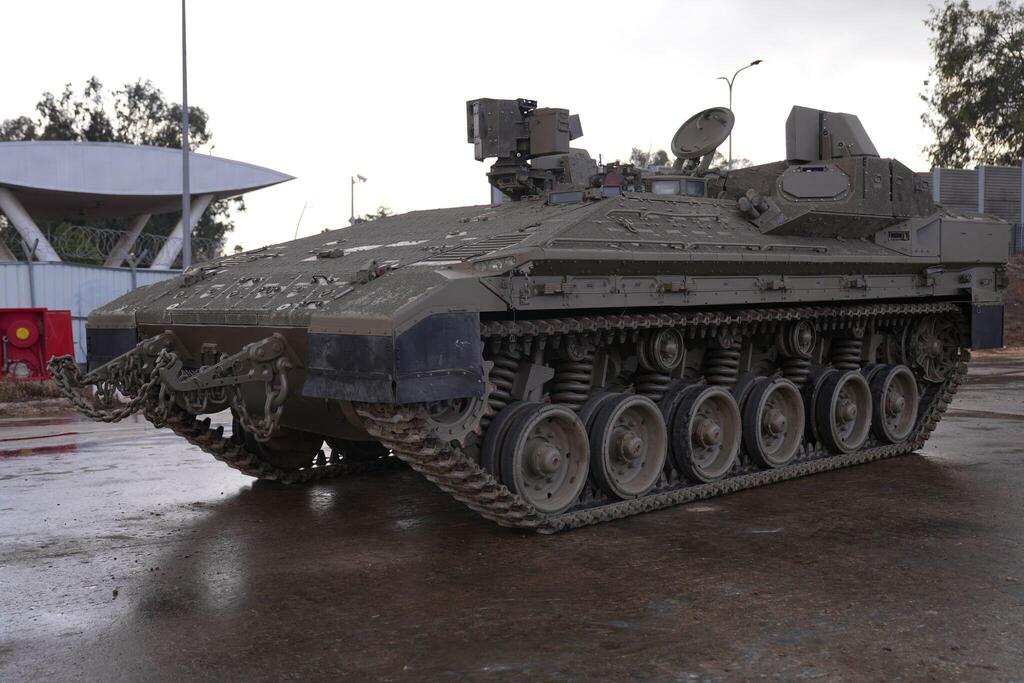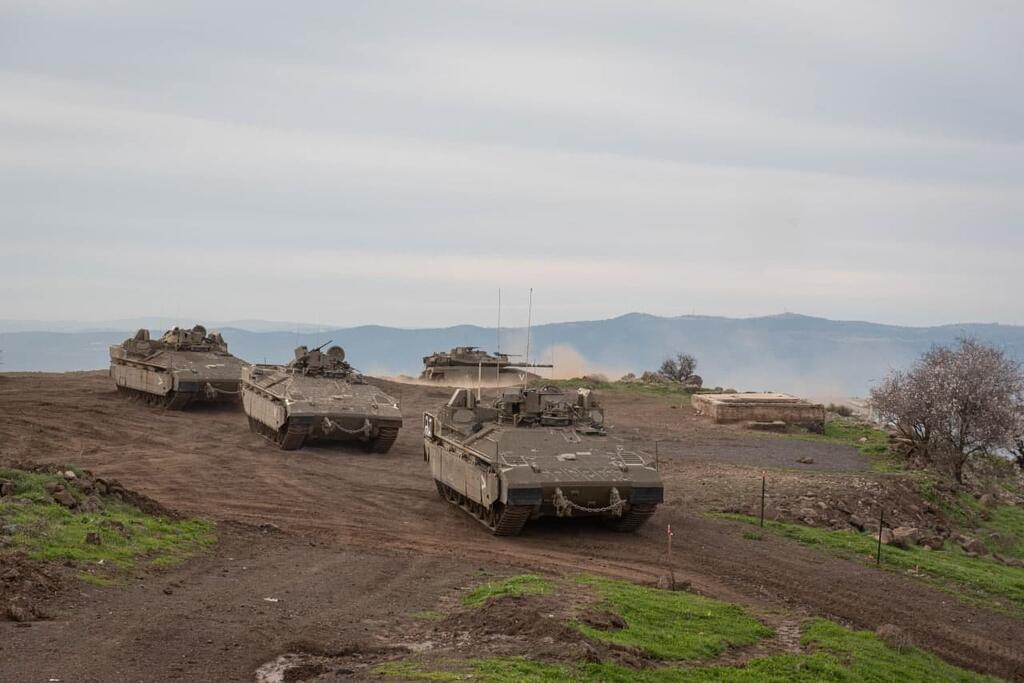Getting your Trinity Audio player ready...
The massive explosion in a Namer armored personnel carrier (APC) Saturday morning, which killed eight soldiers, follows two similar previous tragic incidents during ground operations in the Gaza Strip.
The first occurred at the beginning of the war when a Givati Brigade Namer was hit by an anti-tank missile near Gaza City, resulting in the deaths of 11 soldiers. The second happened in December in Khan Younis when an anti-tank missile struck another Namer, killing four engineering soldiers.
2 View gallery


Damaged Givati Brigade Namer returns to operational status in Gaza
(Photo: IDF Spokesperson's Unit)
In these incidents, as in Saturday's, soldiers traveling in the armored vehicle were killed by the powerful explosion of dozens or hundreds of kilograms of explosives or other explosive materials carried on board, turning the advanced APC into a death trap. These explosives, including liquids, are designed to be stable under certain conditions and strict safety regulations. While previous explosions were caused by anti-tank missiles, Saturday's explosion was likely triggered by an underbelly charge.
In response to past disasters, the army learned several lessons, including transporting explosive materials and demolition tools in unmanned vehicles or minimizing the number of soldiers in armored vehicles carrying such materials on the front lines. The IDF will now investigate whether the Namer was transporting explosives in compliance with these lessons, with an emphasis on maximizing separation between soldiers and containers of explosives and mines.
The engineering Namer that caught fire Saturday morning, known as Namera, is an upgraded version of the Merkava-based APC. Developed in Israel, it entered service in 2016, replacing the Puma (Engineering Obstacle Breacher). It is based on a regular infantry Namer but includes several enhancements and adaptations, capable of carrying 10 soldiers. The Namera also has engineering capabilities, such as minefield breaching tools, bridging capabilities and explosive ordnance disposal tools.




